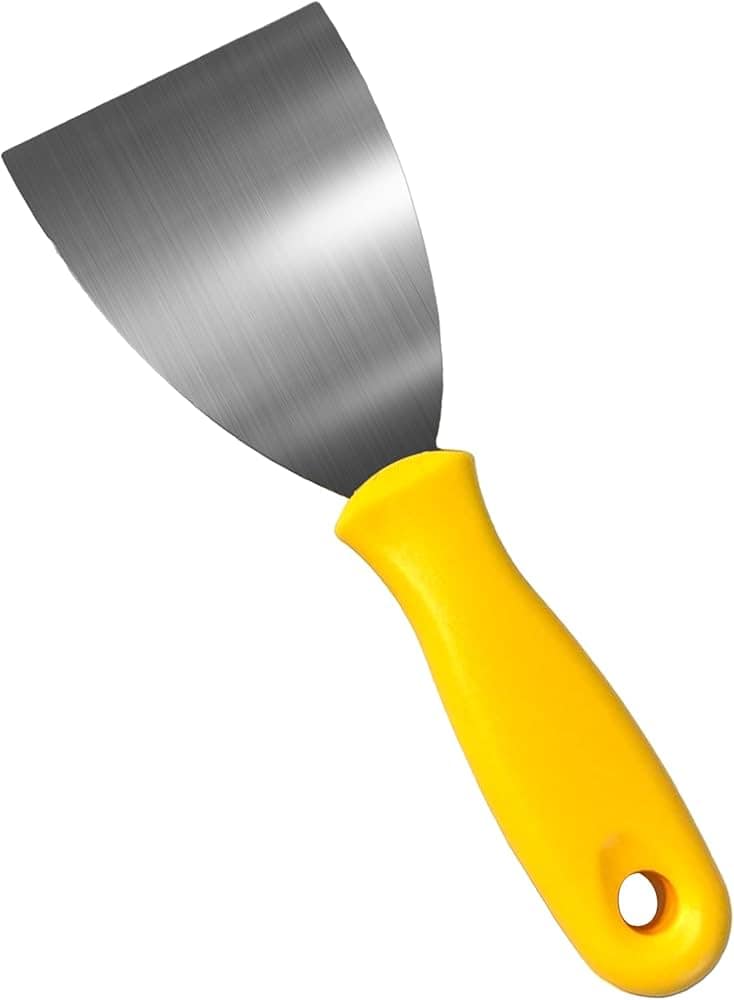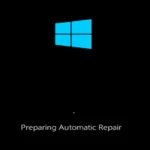Removing old wallpaper may seem like a big job, but with the right tools, techniques, and a little patience, it can be a satisfying do-it-yourself project. This guide will help you tackle this task confidently, allowing you to transform your walls into a clean slate, ready for a fresh new look. You don’t need expensive equipment to get started on removing old wallpaper. With the right tools, it’s a job you can do yourself.
The main tools you need to remove wallpaper are a scoring tool, spray bottle, putty knife, and scraper. These help loosen and peel off the paper. A scoring tool makes tiny holes in the wallpaper. This lets water soak through better. The spray bottle holds water or a mix to wet the paper. A putty knife and scraper help peel and scrape off loose bits.
Some extra items can make the job easier. A steamer can help with tough wallpaper. It uses hot steam to soften the glue. You might also want drop cloths to protect your floors. Gloves keep your hands clean and dry. With these tools you’ll be ready to tackle your wallpaper removal project.

Tackle That Wallpaper: A DIY Guide to Removing Old Wallpaper
Gearing Up: Must-Have Tools for Wallpaper Removal
Before diving into the wallpaper removal process, gather your supplies:
- Wallpaper scraper: Choose a sharp, wide scraper for efficient removal.
- Scoring tool: Creates tiny holes in the wallpaper for better solution penetration.
- Spray bottle or garden sprayer: Used to apply the removal solution.
- Drop cloths: Protect floors and furniture from spills and debris.
- Sponge or cleaning cloth: For wiping down walls after removal.
- Bucket: For mixing the wallpaper removal solution (if needed).
Choosing Your Weapon: Wallpaper Removal Solutions
You have several options when it comes to wallpaper removal solutions:
- Water: Warm water often works well for newer wallpaper.
- Vinegar solution: Mix equal parts white vinegar and warm water.
- Fabric softener solution: Mix equal parts fabric softener and warm water.
- Commercial wallpaper remover: Follow the manufacturer’s instructions for best results.
Prep Work: Protecting Your Space
Before you start peeling, take these precautions:
- Turn off electricity: If working near outlets, switch off the power for safety.
- Clear the room: Remove furniture or cover with drop cloths.
- Protect floors and baseboards: Use drop cloths and painter’s tape.
- Remove outlet covers: Safely loosen or remove outlet covers.
The Removal Process: Step-by-Step Guide
- Score the wallpaper: Use a scoring tool to create small holes in the wallpaper, allowing the solution to penetrate the adhesive.
- Apply the solution: Spray or sponge the wallpaper with your chosen solution, saturating it thoroughly.
- Let it soak: Allow the solution to sit for a few minutes to soften the adhesive.
- Scrape away: Start at a corner or seam and gently scrape the wallpaper away with your scraper.
- Repeat: Repeat the process for stubborn areas, applying more solution if needed.
- Clean up: Remove any remaining adhesive residue with a sponge and warm water or diluted vinegar.
Dealing with Stubborn Wallpaper: Tips for Tough Situations
If the wallpaper is particularly stubborn:
- Use a steamer: A wallpaper steamer can help loosen the adhesive for easier removal.
- Try a different solution: If water doesn’t work, switch to a vinegar or fabric softener solution.
- Score more aggressively: Create more holes in the wallpaper for better solution penetration.
- Be patient: Don’t rush the process or you may damage the walls.
Finishing Touches: Preparing Your Walls for a Fresh Start
Once the wallpaper is gone, take these final steps:
- Wash the walls: Wipe down the walls with warm water and a sponge to remove any remaining residue.
- Patch holes or imperfections: Use spackling compound to fill any holes or dents in the walls.
- Sand smooth: Sand the patched areas for a smooth finish.
- Prime the walls: Applying primer will ensure better adhesion for paint or new wallpaper.
Preparing the Workspace and Tools
Getting ready to remove old wallpaper takes some setup. You’ll need to prep your room and gather the right tools. This helps make the job go smoothly and keeps your space clean.
Workspace Preparation
Clear the room of furniture. Move smaller items out. Cover big pieces with drop cloths. Take down pictures and remove outlet covers. Tape off baseboards and trim to protect them.
Lay drop cloths on the floor. This catches drips and scraps. Open windows for good air flow. Set up bright lights so you can see well.
Check the walls for damage. Mark spots that need fixing later. Remove any loose wallpaper by hand. This gives you a head start.
Tools and Materials
Here’s what you’ll need:
- Spray bottle
- Scoring tool
- Scraper or putty knife
- Sponge
- Ladder
- Rubber gloves
- Towels
A spray bottle helps wet the paper. Use a scoring tool to make small holes in tough spots. This lets the water soak in better.
A scraper or putty knife peels off the paper. Pick one that fits your hand well. Have a few sizes on hand.
Sponges clean up paste after scraping. Get thick ones that hold lots of water. Rubber gloves keep your hands dry and safe from chemicals.
A ladder helps you reach high spots safely. Make sure it’s steady before climbing. Keep towels nearby to wipe up drips and spills.
Removing the Wallpaper
Taking off old wallpaper can be tricky. There are a few ways to do it. Some methods work better than others depending on the type of wallpaper.
Dry Stripping Process
Start by trying to peel off the wallpaper by hand. Grab a corner and pull gently. If it comes off easily, you’re in luck! This works best with strippable wallpaper.
For stubborn paper, use a scoring tool. This makes tiny holes in the paper. It lets water or remover soak in better. Be careful not to damage the wall underneath.
If dry stripping doesn’t work, move on to wet methods. These usually work better for older or tougher wallpapers.
Wet Removal Techniques
Mix warm water with dish soap or vinegar in a spray bottle. Spray the wall and let it soak for 15 minutes. This helps loosen the glue.
For really tough paper, try a wallpaper steamer. Hold the steamer pad against the wall for about 30 seconds. The steam softens the glue.
After steaming or spraying, use a scraper to peel off the paper. Work in small sections. Be patient and gentle to avoid damaging the wall.
Post-Removal Cleanup
Once the paper is off, you’ll need to remove leftover glue. Mix warm water with a bit of dish soap or fabric softener. Use a sponge to scrub the walls.
For tough glue, try a mix of hot water and vinegar. Scrub gently with a sponge or soft brush. Rinse the walls with clean water when done.
Let the walls dry completely before painting or hanging new paper. This can take a day or two. Fix any damage to the wall before moving on to your next project.
Frequently Asked Questions
Removing old wallpaper can be tricky. Here are some common questions about wallpaper removal tools and methods.
How do professionals remove wallpaper effectively?
Pros use a mix of tools and techniques. They often start with a scoring tool to make tiny holes in the paper. Then they apply a removal solution and let it soak. After that they use scrapers to peel off the paper.
What is the most efficient method to remove wallpaper without a steamer?
The fastest way without a steamer is to use a removal solution. Mix hot water with liquid fabric softener in a spray bottle. Spray it on the wall and let it soak. Then scrape off the paper with a putty knife.
What are the best practices for removing old wallpaper from drywall?
Be gentle to avoid damaging the drywall. Use a wallpaper scraper or putty knife to lift edges. Peel slowly and use a damp sponge on tough spots. Don’t oversoak the wall as this can harm the drywall.
Which wallpaper removal solution is recommended by experts?
Many pros like enzyme-based removers. These break down the glue well and aren’t too messy. WP Chomp Wallpaper Scraping Tool is a top pick for its effectiveness.
Are there any innovative hacks for easing the wallpaper removal process?
One clever trick is to use a clothes steamer. The steam helps loosen the glue. Another tip is to use a mixture of vinegar and hot water. This can work well on stubborn spots.
Can fabric softener be used to assist in removing wallpaper, and if so, how?
Yes fabric softener can help. Mix 1/4 cup of softener with a gallon of hot water. Spray this on the wall and let it soak for 15 minutes. The softener helps break down the glue making the paper easier to remove.







